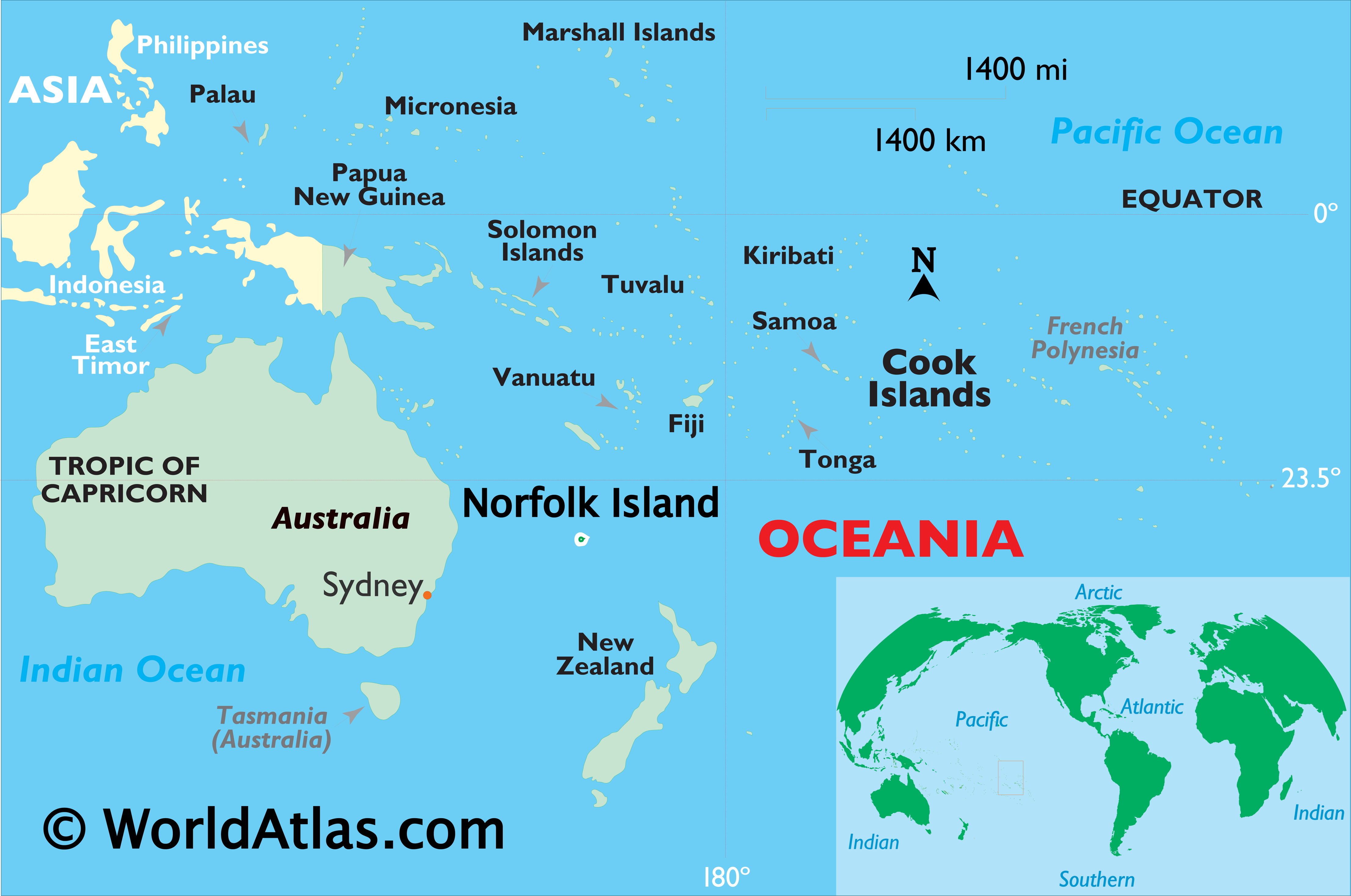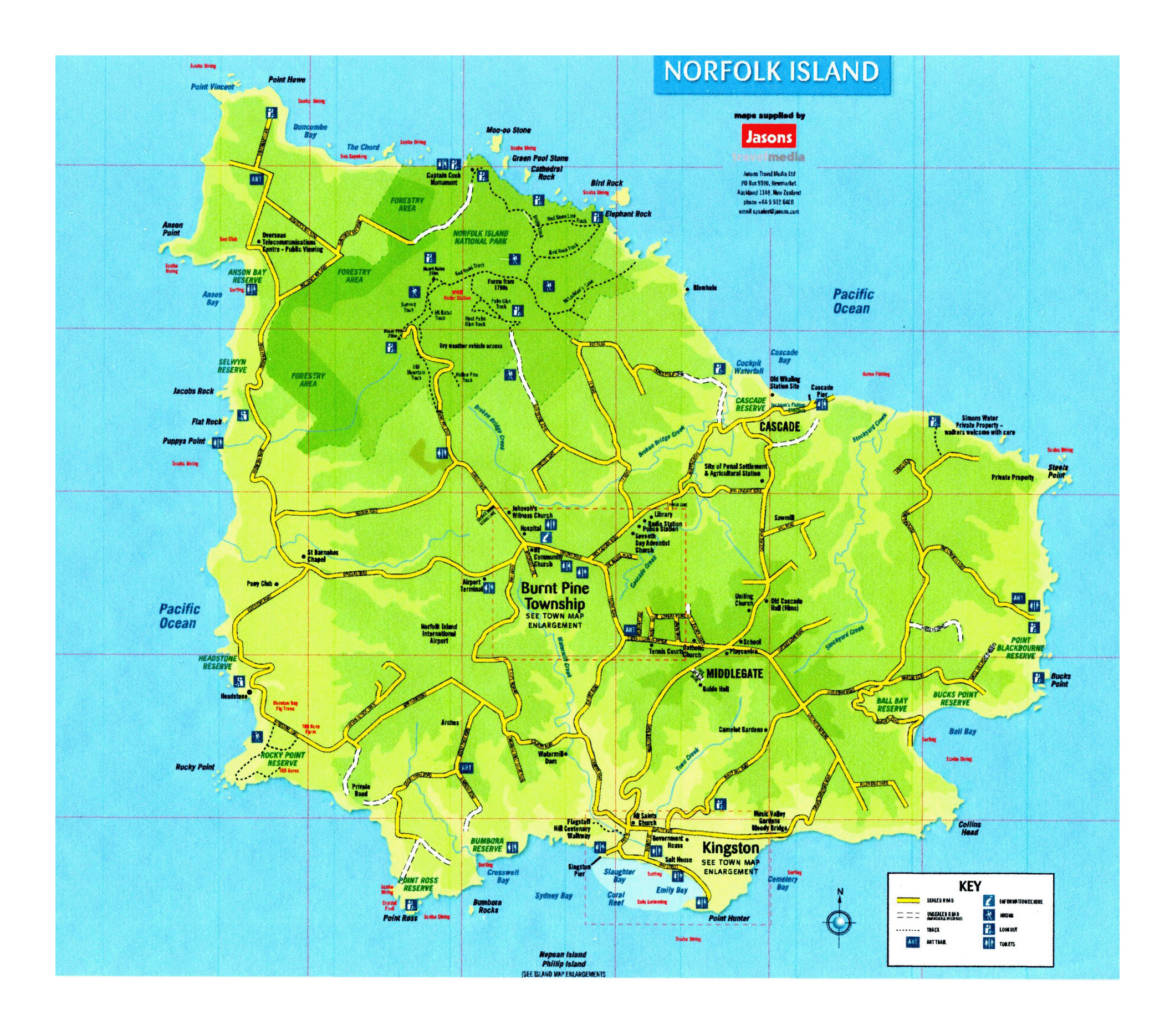Map of norfolk island – Unveil the hidden gems of Norfolk Island with our comprehensive map, guiding you through its rich history, stunning landmarks, and pristine natural wonders.
From the towering heights of Mount Pitt to the tranquil shores of Emily Bay, embark on a journey that will ignite your wanderlust and leave an unforgettable mark on your soul.
Historical Overview of Norfolk Island’s Cartography
The cartographic history of Norfolk Island, an isolated island in the South Pacific Ocean, spans centuries of exploration, settlement, and scientific inquiry. From early sketches by European explorers to the precise digital maps of today, the evolution of Norfolk Island maps reflects the island’s rich history and its changing significance in the global landscape.
Early Sketches and Exploration
The first known maps of Norfolk Island were created by European explorers in the late 18th century. In 1774, Captain James Cook, the renowned British explorer, visited Norfolk Island and produced a rough sketch of its coastline. This sketch, along with other early maps, provided a basic understanding of the island’s geography and its location in relation to other Pacific islands.
Geographical Features and Landmarks
Norfolk Island, a captivating speck in the vast Pacific, boasts an array of captivating geographical features and landmarks that have shaped its unique identity. From the towering heights of Mount Pitt to the pristine shores of Emily Bay, each landmark holds a story of its own, a testament to the island’s rich history and captivating natural beauty.
Mount Pitt
Rising majestically as the island’s highest point, Mount Pitt stands as a beacon of Norfolk Island’s rugged beauty. Its volcanic origins have left a legacy of steep slopes and dramatic cliffs, offering breathtaking panoramic views of the island and the surrounding ocean.
Emily Bay
Nestled along the island’s southern coast, Emily Bay is a picturesque haven known for its calm turquoise waters and pristine white-sand beach. Sheltered by Norfolk Island pines, this idyllic bay provides a tranquil retreat for swimming, snorkeling, and sunbathing.
Kingston
Kingston, the island’s charming capital, is a historical gem. Founded in 1788, it showcases a collection of well-preserved Georgian buildings, including the Government House and the Old Military Barracks. Kingston’s streets are lined with Norfolk Island pines, creating a picturesque ambiance that transports visitors back in time.
Point Hunter
Located at the island’s northwestern tip, Point Hunter offers a rugged and dramatic coastline. Its towering cliffs, crashing waves, and seabird colonies create a breathtaking spectacle that captures the raw beauty of Norfolk Island.
Explore the vibrant streets of Las Vegas with our comprehensive Treasure Island Las Vegas map . From the dazzling lights of the Strip to the hidden gems off the beaten path, this map will guide you to the city’s most captivating attractions.
Anson Bay
Anson Bay, on the island’s eastern coast, is a secluded paradise. Its crystal-clear waters, abundant marine life, and pristine coral reefs make it a haven for snorkeling and diving enthusiasts.
Cascade Bay
Cascade Bay, on the island’s northern coast, is renowned for its stunning waterfall. The cascading waters plunge into a crystal-clear pool, surrounded by lush greenery, creating a picturesque natural sanctuary.
Blenky Beach
Blenky Beach, located on the island’s west coast, is a secluded stretch of white-sand beach. Its sheltered location makes it ideal for swimming, sunbathing, and picnics, offering a tranquil escape from the hustle and bustle.
Interactive Map with Points of Interest
Norfolk Island’s diverse landscape and rich history offer an array of attractions, from stunning natural wonders to historical landmarks. An interactive map can help visitors navigate the island effortlessly, showcasing its hidden gems and providing a comprehensive guide to its offerings.
Points of Interest
The interactive map will feature clickable icons representing various points of interest, including:
-
-*Natural Attractions
Discover pristine beaches, lush rainforests, and towering cliffs that define Norfolk Island’s natural beauty.
-*Historical Sites
Explore the island’s convict past at the Kingston and Arthur’s Vale Historic Area, or delve into its maritime heritage at the Norfolk Island Museum.
-*Cultural Landmarks
Immerse yourself in the island’s unique culture at the Bounty Folk Museum or attend a traditional Norfolk Island dance performance.
-*Accommodation
Find the perfect place to stay, from cozy bed and breakfasts to luxurious resorts.
-*Restaurants
Savor the island’s fresh seafood and local delicacies at charming cafes and restaurants.
-*Other Amenities
Nestled amidst the serene beauty of nature, Dolce by the Lakes offers a tranquil escape from the bustling city. As you stroll along the scenic lakefront trails, let the gentle breeze carry your worries away and immerse yourself in the breathtaking surroundings.
Locate essential services such as banks, pharmacies, and medical facilities.
Cultural and Heritage Sites
Norfolk Island boasts a rich cultural and historical tapestry, with numerous sites holding immense significance to its heritage. From historical buildings to archaeological treasures, these sites offer a glimpse into the island’s unique past and present.
Discover a world of home improvement possibilities at Menards Crystal Lake IL . With its vast selection of building materials, appliances, and decor, you’ll find everything you need to transform your home into the sanctuary you’ve always dreamed of.
Historical Buildings
- Kingston and Arthur’s Vale Historic Area:A UNESCO World Heritage Site, this area encompasses the remnants of the convict settlement established in 1788. Its buildings, including the Commandant’s House and the Commissariat Store, provide a tangible connection to Norfolk Island’s penal past.
- Emily Bay Settlement:Founded in 1856 by descendants of the Bounty mutineers, this settlement showcases the island’s Pitcairn heritage. Visitors can explore the cemetery, church, and other buildings that tell the story of this resilient community.
- St. Barnabas Chapel:Built in 1847, this charming chapel is the oldest Anglican church on Norfolk Island. Its beautiful stained-glass windows and intricate woodwork reflect the island’s religious history.
Archaeological Sites, Map of norfolk island
- Bloody Bridge:This stone bridge, built by convicts in the 1830s, bears witness to the harsh conditions of the penal settlement. Its name stems from a gruesome incident where a convict was flogged to death.
- Red Rock:This ancient volcanic formation is home to petroglyphs created by the Polynesian settlers who first inhabited Norfolk Island. These carvings offer a fascinating glimpse into their culture and beliefs.
- Mount Pitt:The highest point on Norfolk Island, Mount Pitt was once a sacred site for the Polynesian settlers. Today, it offers stunning views of the island and its surrounding waters.
These cultural and heritage sites serve as a testament to Norfolk Island’s rich and multifaceted history. They provide a unique opportunity to explore the island’s past, connect with its present, and appreciate its enduring legacy.
Nature Reserves and Protected Areas
Norfolk Island is home to a diverse range of ecosystems, from lush rainforests to pristine beaches. These unique habitats support a rich variety of flora and fauna, many of which are found nowhere else on Earth. To protect these valuable natural assets, several nature reserves and protected areas have been established across the island.
The most significant of these is the Norfolk Island National Park, which covers over a third of the island’s land area. The park encompasses a variety of habitats, including rainforest, coastal cliffs, and wetlands. It is home to a number of threatened species, including the Norfolk Island green parrot and the Norfolk Island boobook owl.
Other important nature reserves on Norfolk Island include the Phillip Island Nature Reserve, the Mount Bates Conservation Area, and the Anson Bay Conservation Area. These reserves protect a range of habitats, from seabird colonies to subtropical rainforest. They are home to a variety of native plants and animals, including the Norfolk Island pine, the Norfolk Island cicada, and the Norfolk Island skink.
Conservation Efforts
The Norfolk Island National Park and other nature reserves are managed by the Norfolk Island National Parks and Wildlife Service. The service works to protect the island’s natural heritage through a variety of conservation programs. These programs include habitat restoration, threatened species management, and public education.
The Norfolk Island community is also actively involved in conservation efforts. There are a number of volunteer groups that work to protect the island’s environment. These groups undertake a variety of activities, such as planting trees, removing weeds, and monitoring wildlife.
Outcome Summary: Map Of Norfolk Island
Whether you seek adventure, tranquility, or a glimpse into the past, our map of Norfolk Island will be your trusted companion, leading you to the island’s most captivating treasures.
Let the map be your guide as you create memories that will last a lifetime, immersing yourself in the unique charm and beauty of this extraordinary island.
FAQ Guide
What are the must-visit landmarks on Norfolk Island?
Mount Pitt, Emily Bay, Kingston, and the Norfolk Island Museum are among the top attractions not to be missed.
Can I find an interactive map of Norfolk Island?
Yes, our map includes clickable icons and markers, providing detailed information about attractions, accommodations, and other amenities.
What is the best time to visit Norfolk Island?
Year-round, as the island offers diverse experiences in each season.


